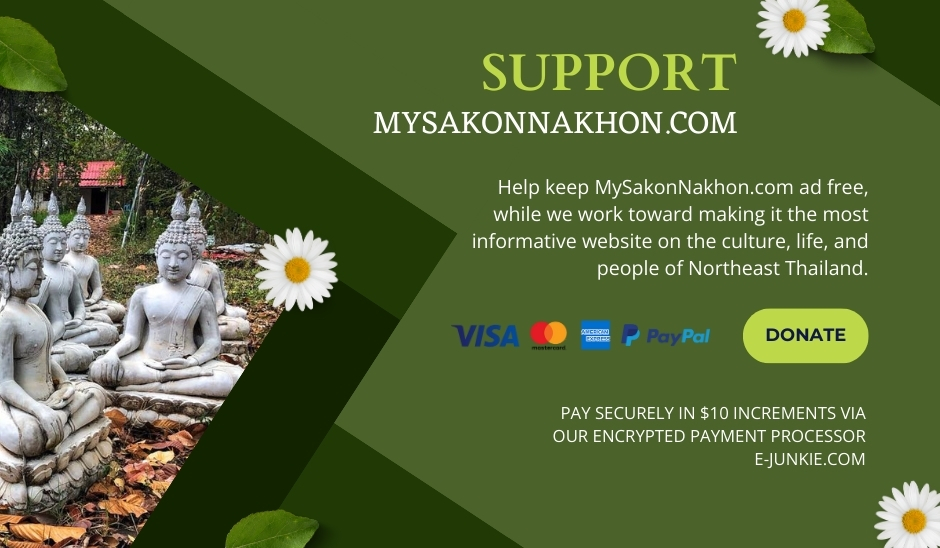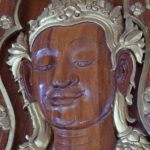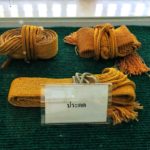
Ganesh Chaturthi in Thailand – Thai Temple Ganesha Statues
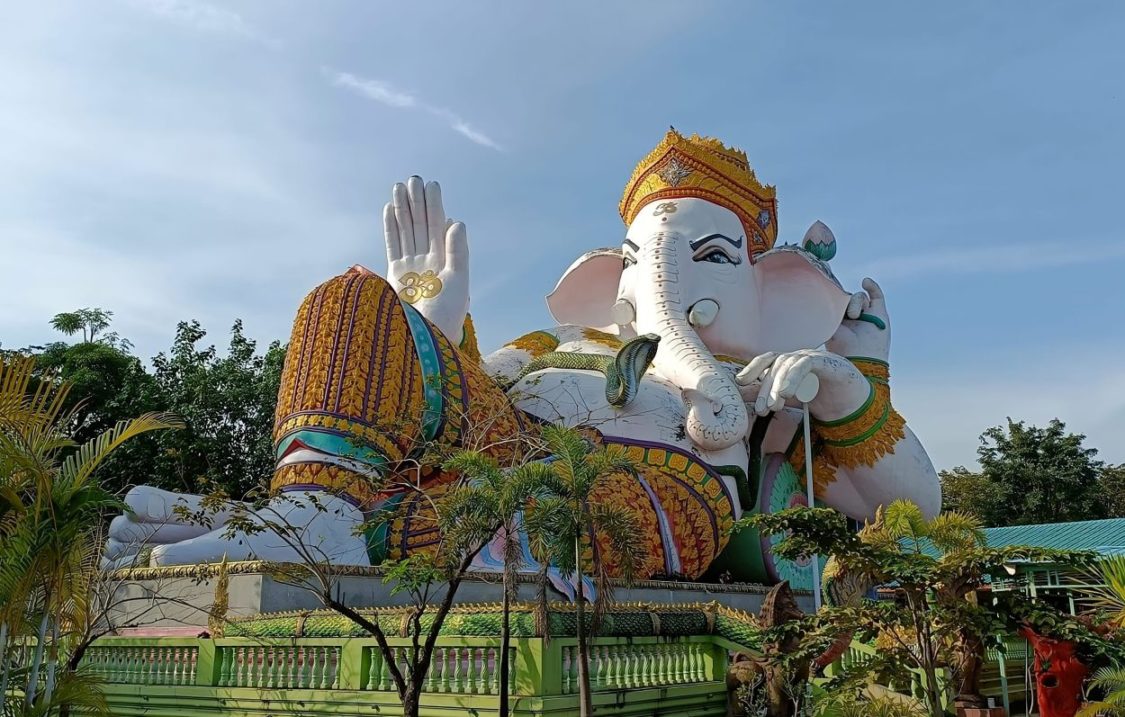
Ganesh Chaturthi is a Hindu festival that celebrates the birth of Lord Ganesha, who is known as Phra Phikanet (พระพิฆเนศ) in Thailand. Ganesha is an elephant-headed deity who is revered as the “Remover of Obstacles” and the harbinger of good fortune and success.
While Ganesh Chaturthi is one of the most popular festivals in India, celebrations in Thailand are smaller and conducted with less fanfare. The festival falls on the Hindu calendar month of Bhadrapada, which usually corresponds to August or September.
This year (2023) the 10 day festival will be held from Sept. 19 – 28th worldwide.
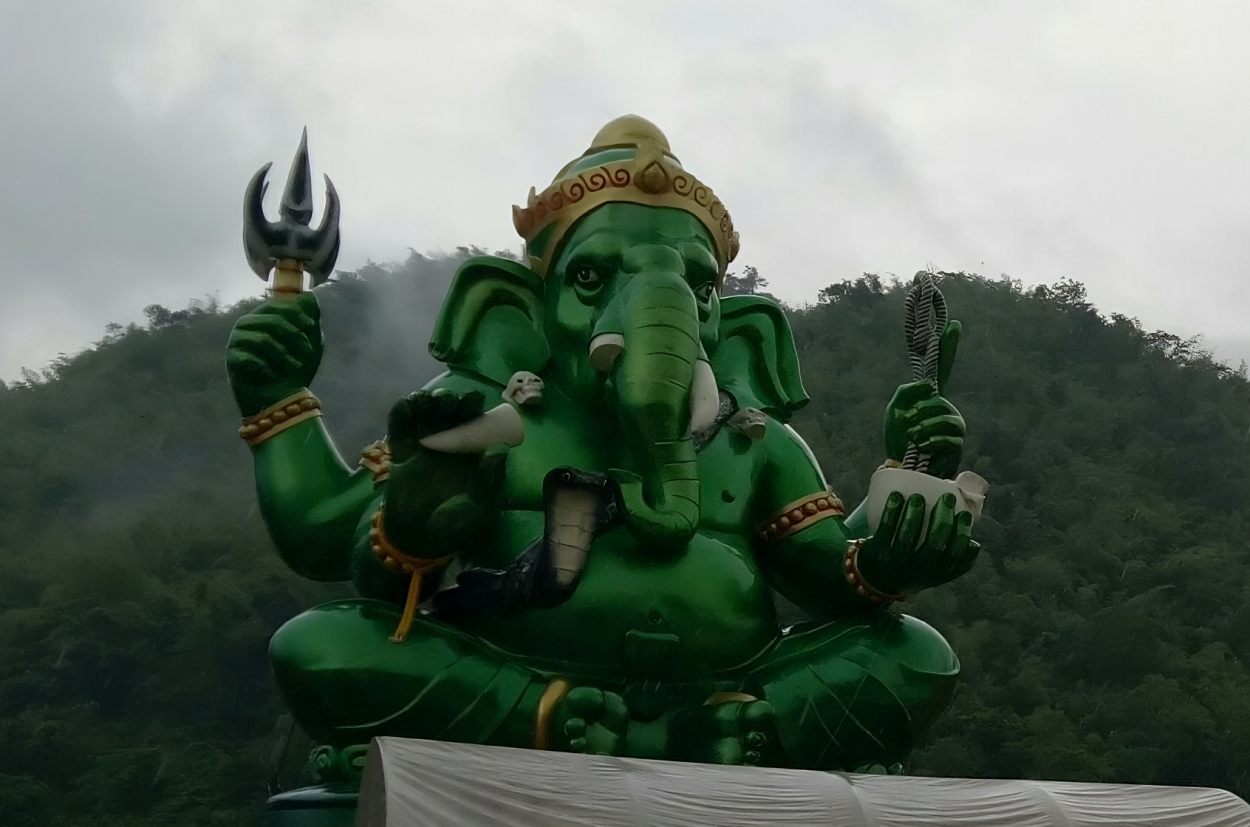
How is Ganesh Chaturthi Celebrated in Thailand?
The Hindu religion is entwined with the Buddhist faith of the Thai people. One often can see statues of Hindu deities, such as Lord Ganesha, at Thai temples. However, the Buddhist religion is first and foremost. Ganesh Chaturthi (พระพิฆเนศจตุรถี) is therefore not considered a major holiday on the Thai religious calendar.
Small celebrations (usually unpublicized) can be discovered at some Thai temples on the first day of the 10 day festival, which honors Lord Ganesha’s birth. There are also a few larger celebrations held.
The most prominent Ganesh Chaturthi festival in Thailand is sponsored by Vishwa Hindu Parishad (VHP), an organization dedicated to supporting Thailand’s Hindu community.
The 16th annual Ganesh Chaturthi Festival will be held at the sports field in front of the Nimibutr Building in Bangkok (BTS Stadium Exit).
The celebrations take place on Friday, September 22, 2023 from 4:00 p.m. to 9:00 p.m.; Saturday, September 23, 2023 from 10:30 a.m. to 9:30 p.m.; and on Sunday, September 24, 2023 (10:00 a.m. to 11:00 a.m.).
Many people travel to Chachoengsao province to celebrate Ganesh Chaturthi in Thailand. This quaint central Thai province surrounds the lovely Bang Pakong River. It has 3 locations with massive statues of Lord Ganesha: Wat Phrong Akat, Wat Saman Rattanaram, and Khlong Khuean Ganesh International Park (home of the largest Ganesha statue in the world, standing 39 meters tall).
Pilgrimages also are made to the striking emerald green Ganesha at Wat Chong Lom (วัดช่องลม) in the mountains of Ratchaburi province, as well as the huge reclining Ganesha at Nakon Nayok’s famous Ganesha Park, where there is also a museum honoring the Hindu deity.
However, most celebrations of Ganesh Chaturthi in Thailand are small affairs, where devotees visit a small statue of Lord Ganesha at a temple near their home. They then make prayers, burn incense, offer sweets and flowers, and recite several times the following mantra:
“Om Sri Nesaya Namaha” (โอม ศรีคเณศยา นะมะหะ).
They then end the recitation with a final “Om Shanti Shanti Shanti” (โอม ศานติ ศานติ ศานติ).
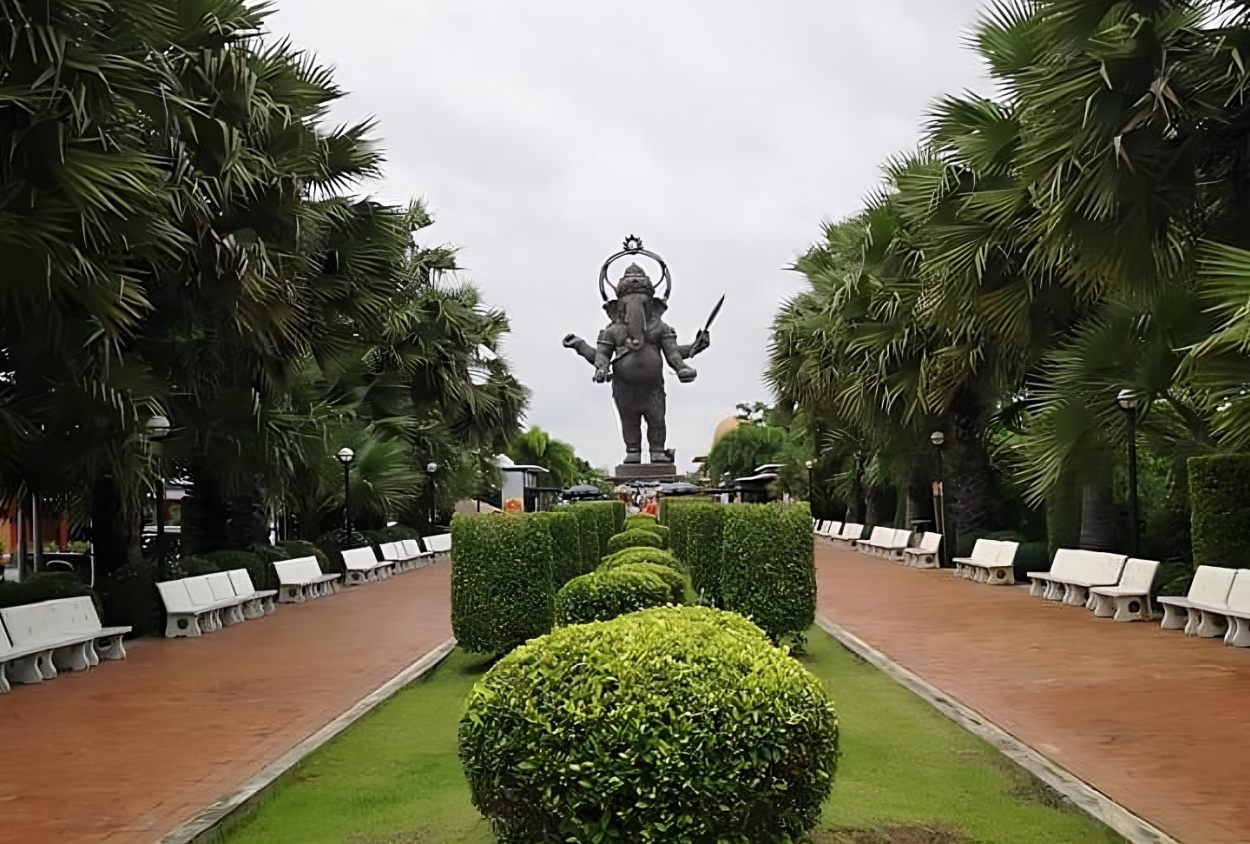
Who is Lord Ganesha?
Lord Ganesha, also known as Vinayaka or Ganapati, is one of the most revered and beloved deities in Hinduism. He holds a prominent place in Hindu mythology and is easily recognizable by his distinctive appearance, featuring an elephant head on a human body with 4 arms.
Ganesha is invoked at the outset of important undertakings, rituals, and ceremonies to seek his blessings and guidance.
Ganesha’s origin story varies in different Hindu texts, but one of the most well-known is that he was created by the Goddess Parvati, the consort of Lord Shiva. According to this narrative, Parvati fashioned Ganesha from clay and breathed life into him. Ganesha’s purpose was initially to guard the entrance while Parvati bathed.
When Lord Shiva returned and was denied access by the young Ganesha (whom he did not recognize), a conflict ensued, leading to Ganesha’s beheading. On Parvati’s urging, Shiva brought Ganesha back to life and replaced his head with that of an elephant. His unique appearance symbolizes Ganesha’s ability to transcend dualities and embrace both the human and divine aspects of existence.
Ganesha noticeably has a broken tusk. According to legend, when Ganesha was writing the Mahabharata (an epic Sanskrit poem), he broke his tusk to write with after his feather pen broke.
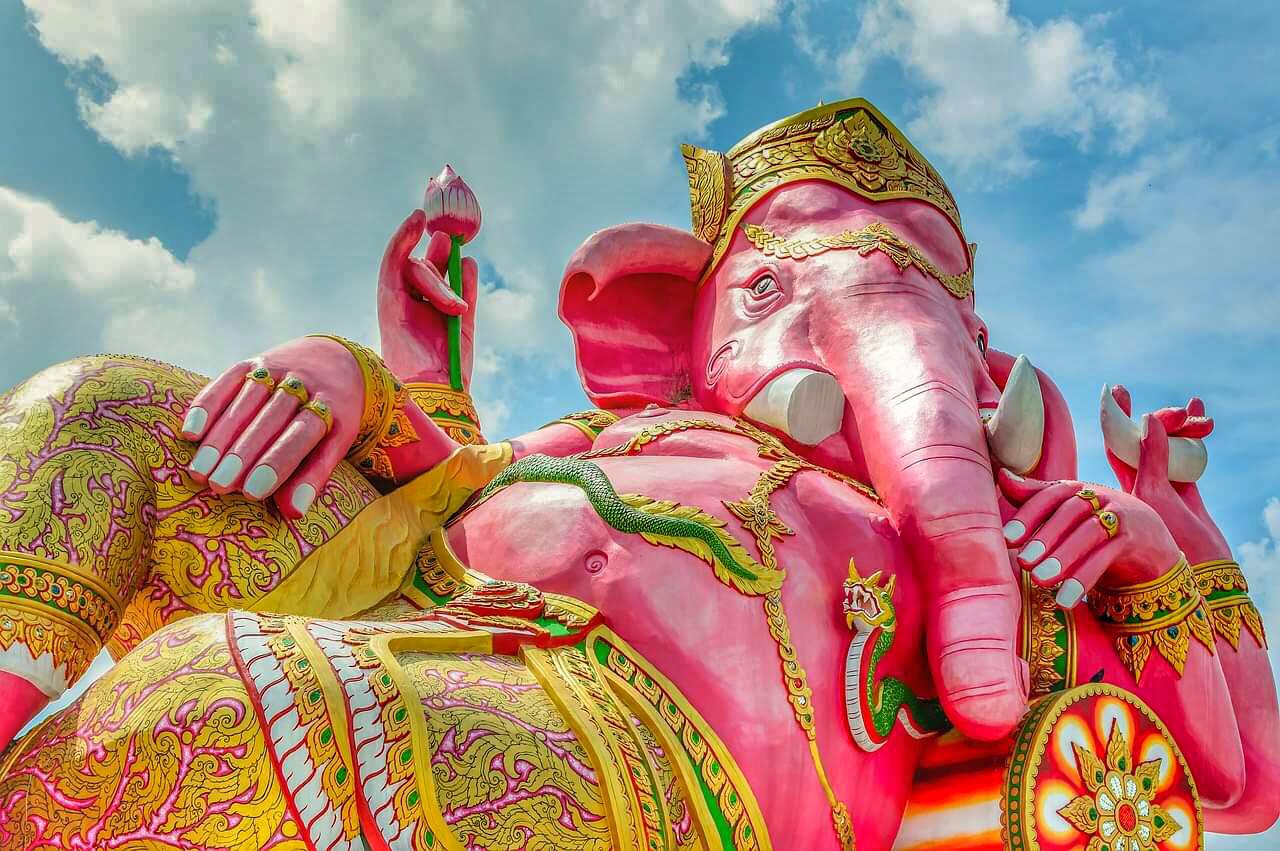
Ganesha Embodies Several Key Attributes
1. Remover of Obstacles: Ganesha is primarily known for his role in removing obstacles, both material and spiritual. Devotees in Thailand pray to him for help in overcoming challenges, achieving success, and ensuring the smooth progression of endeavors.
2. Patron of Wisdom and Learning: Ganesha is revered as the patron of wisdom, intellect, and learning. He is often associated with education, making him a beloved deity among students and scholars. His elephant head is a symbol of his immense knowledge and intelligence. There is a notable statue of Ganesha at Sakon Nakhon Rajabhat University and other Thai universities.
3. Symbol of Good Fortune: Ganesha is also a symbol of good fortune, prosperity, and auspicious beginnings. His presence is believed to bring positive energy and blessings into one’s life.
4.Guardian of Thresholds: As the deity who guards entrances and thresholds, Ganesha is worshipped at the start of new ventures, homes, and temples. His image can often be found at the entrance of Hindu households.
5. Modak and Mouse: Ganesha is typically depicted holding a modak (a sweet dumpling) and riding a mouse, his divine vehicle. The modak symbolizes the sweetness of knowledge, and the mouse represents his ability to overcome obstacles of all sizes.
Ganesha is venerated by Hindus throughout India, as well as among many Southeast Asian Buddhists. Ganesh Chaturthi marks his birth anniversary, which is celebrated by followers worldwide.
During this festival, clay or plaster-of-Paris statues of Ganesha are installed in homes and public places, and elaborate rituals, prayers, processions, and cultural activities take place to honor and seek the blessings of the beloved deity.
At the end of the festival, the clay statues of Ganesha are dissolved in rivers or lakes to return to Mount Kailash, his home atop the Himalayas.
If you are looking for a Ganesha statue to make a pilgrimage to in Sakon Nakhon during Ganesh Chaturthi, our favorite one is the highly original and quirky one at Wat Pa Ban Khamin.
- The Hidden Dharma of Thai Language & Culture - May 11, 2024
- The Royal Ploughing Ceremony in Thailand – A History - May 8, 2024
- Dying Well the Buddhist Way in Thailand - May 7, 2024
